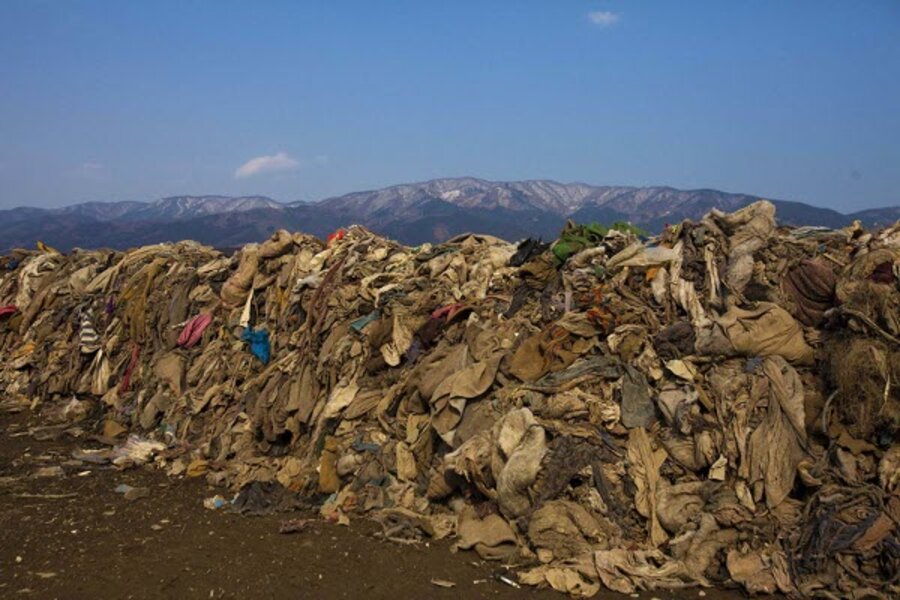Debris from tsunami to reach West Coast, join Great Pacific Garbage Patch
Loading...
Refrigerators, TVs and other debris dragged into sea when a massive earthquake hit Japan last March, causing tsunamis as high as 130 feet (40 meters) to crash ashore, could show up in remote atolls north of Hawaii as soon as this winter, with other pieces reaching parts of the West Coast in 2013 and 2014, experts say.
Debris from the tsunami initially formed a thick mass in the ocean of Japan's northeastern coast. But ocean currents have dispersed the pieces so they're now estimated to spread out some 3,000 miles halfway across the Pacific.
The National Oceanic and Atmospheric Administration said Tuesday the first bits of tsunami debris are estimated to make landfall this winter on small atolls northwest of the main Hawaiian Islands. Other pieces are expected to reach the coasts of Oregon, Washington state, Alaska and Canada between March 2013 and March 2014.
NOAA's tsunami marine debris coordinator, Ruth Yender, told an online news conference that agency workers were boarding Coast Guard flights that patrol the archipelago. NOAA also asked scientists stationed at Midway and other atolls to look for the debris.
In September, a Russian training ship spotted a refrigerator, a television set and other appliances west of Hawaii. By now, the debris has likely drifted so far apart that only one object can be seen at a time, said Nikolai Maximenko, a University of Hawaii researcher and ocean currents expert.
Most items likely sank not far from Japan's eastern coast.
One million to 2 million tons of debris remain in the ocean, but only 1 to 5 percent of that could reach American and Canadian shorelines, Maximenko said. The tsunamis that followed the magnitude-9 earthquake generated 20 million to 25 million tons of debris, including what was left on land.
Yender said that so far, no debris confirmed to be from the tsunamis has landed in the U.S., including large buoys suspected to be from Japanese oyster farms found in Alaska last year. The buoys would have had to travel faster than currents to get to Alaska at that time if they were set loose by the March 11 tsunamis.
Similar buoys have washed ashore in Alaska and the U.S. West Coast before the tsunami, she said.
Yender said there is little chance of any debris being contaminated by radiation. The debris came from a large swath of Japan's northeastern coast, not only near the tsunami-damaged nuclear power plant in Fukushima. Further, it was dragged out to sea with the tsunamis, not while the Fukushima plant experienced multiple meltdowns.
Nicholas Mallos, a conservation biologist and marine debris specialist for the Ocean Conservancy, said many of the objects in the debris were expected to be from Japan's fishing industry. That could pose a risk for wildlife, such as endangered Hawaiian monk seals, if fishing gear washes up on coral reefs or beaches.
"The major question is how much of that material has sank since last year, and how much of that remains afloat or still in the water column," Mallos said.
Maximenko said the dispersion of the debris makes it more difficult to track but no less hazardous.
"In many cases it's not density that matters, it's total amount," he said. "For example, if there's a current flowing around Midway island, that island would collect debris like a trawl moving across the ocean. It will collect all the debris on its way."
Ultimately, Maximenko said, most of the remaining tsunami debris will join garbage floating in a gyre between Hawaii and California produced by swirling Pacific currents. Much of that trash in a wide area known as the Great Pacific Garbage Patch is bits of plastic, which slowly breaks down into smaller pieces but doesn't completely disappear. It was unclear whether large items like refrigerators will make it across the ocean because there has been little precedent for such an event.





